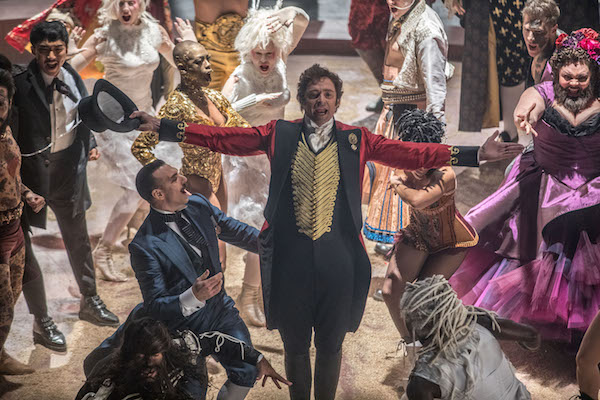
'The Greatest Showman' propels the movie musical
By Martha K Baker
Like its predecessors, from "Seven Brides for Seven Brothers" to "Chicago," "The Greatest Showman" makes a strong case for the movie musical. This one is about grandness grown spectacular, a circus that offers big-tent ideas with down-home family concepts, set to tunes written by Benj Pasek and Austin Paul of "Evan Hanson" fame.
Phineas Taylor Barnum started out as a poor tailor's son, toting rolls of broadcloth, and rose to being the ringmaster of a show of sparkles on satin. He married a rich woman, despite her father's protests, and he fathered two daughters. To support them, he opened a museum of curiosities, patched together with tape and imagination. His girls suggested that the display needed to be livelier, so Barnum exploited his interest in the oddballs of life -- the dwarf, the bearded woman, the ancient woman, the tall man. They became family just as his attention was drawn away from his own family to a Swedish nightingale named Jenny Lind. When he came to his senses, it was to see the whole thing go up in smoke.
Hugh Jackman is the perfect Barnum, bent as a boy, swaggering as an impresario. He plays well off Zac Efron as Philip Caryle, his moneyman. Barnum's wife Charity is played by Michelle Williams, a great contrast to her acting as Gail Getty in "All the Money in the World." The enormous cast includes the brilliant Keala Settle as Lettie Lutz, the bearded lady, and Rebecca Ferguson as Jenny Lind, dressed in ivory white swaths of multi-foliate satin, designed by costumer Ellen Mirojnick. Seamus McGarvey's cinematography excels from white light to snow light.
Michael Gracy's direction of Jenny Bicks' and Bill Condon's script is spectacular, warm, and grand. "The Greatest Showman" proves that Gracy understands both film and musical as genres of show business.


